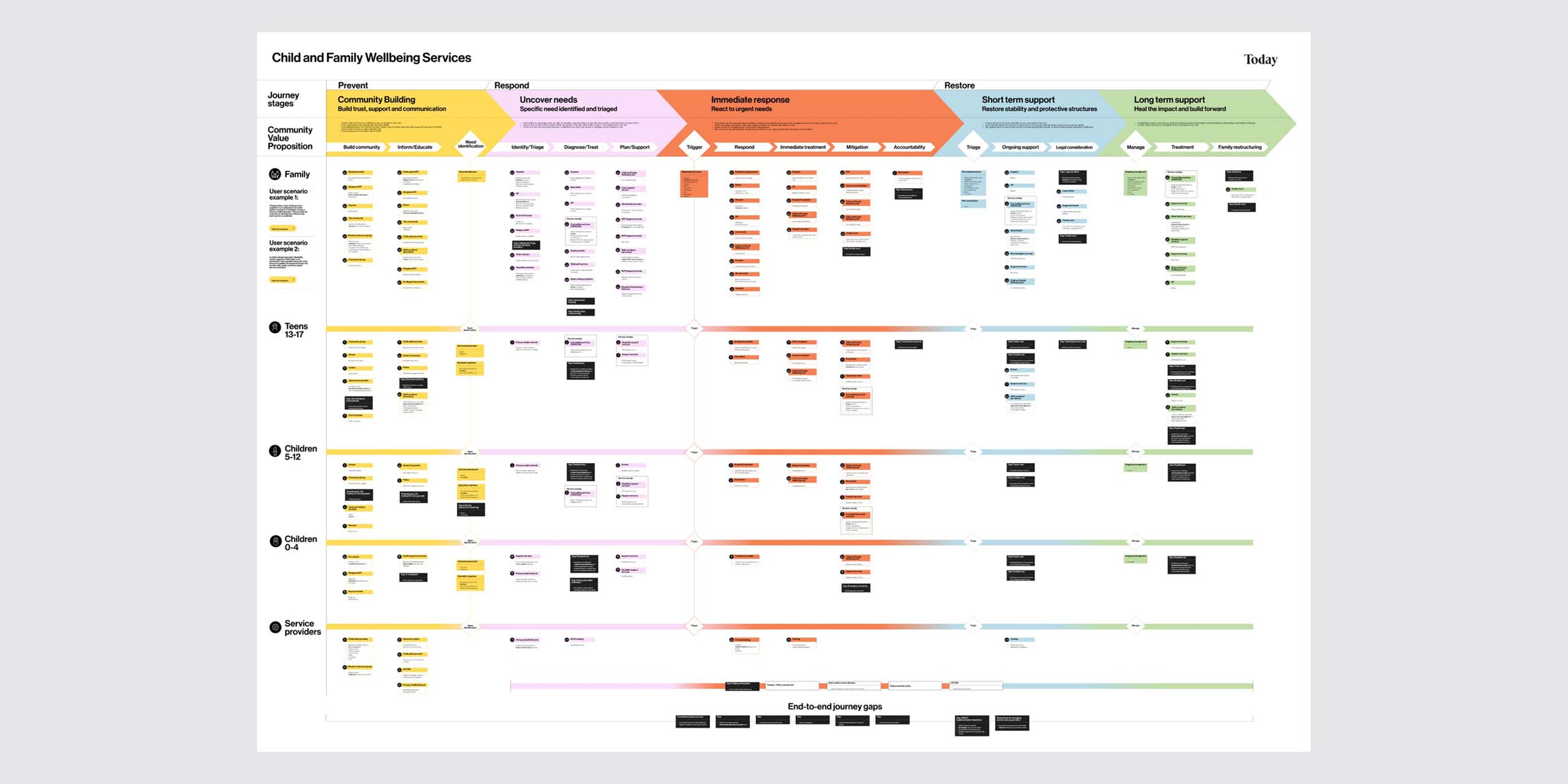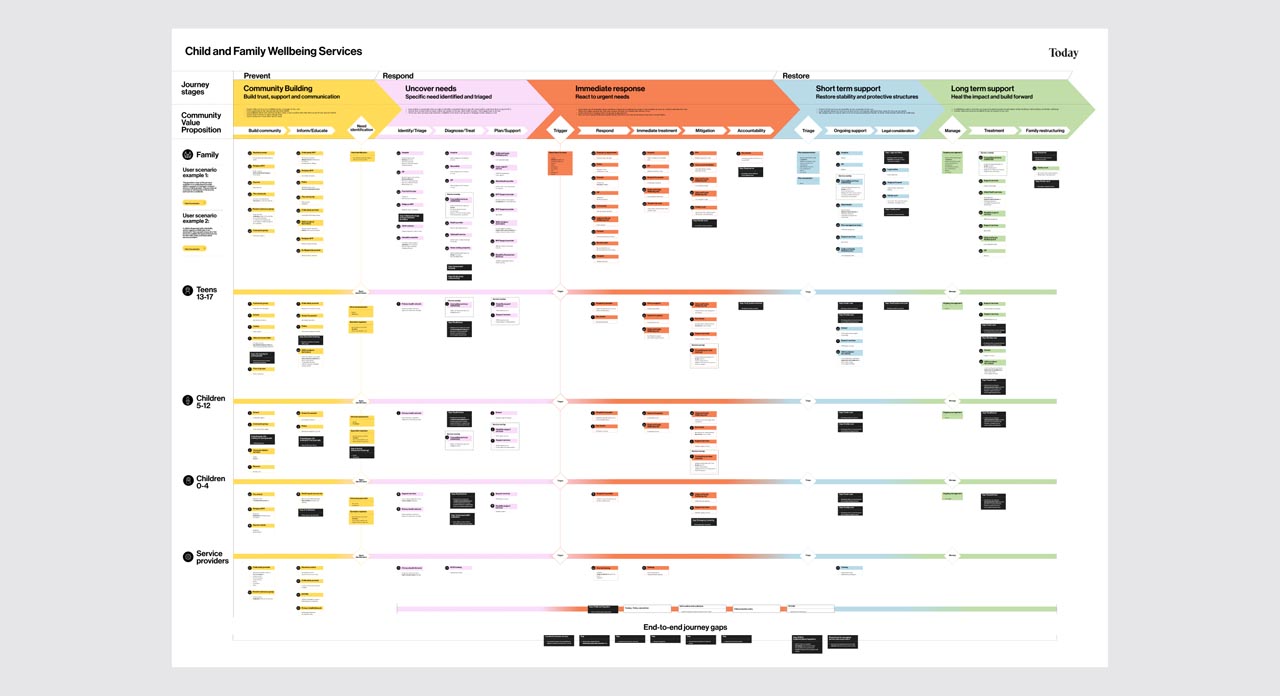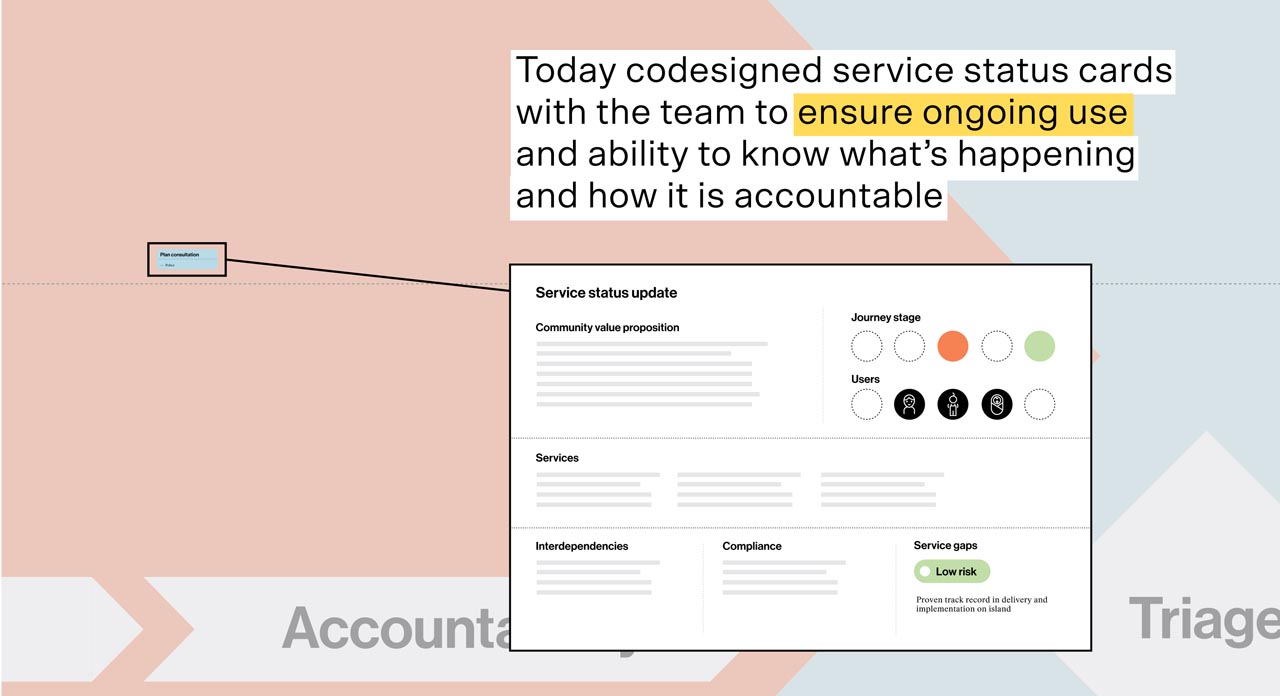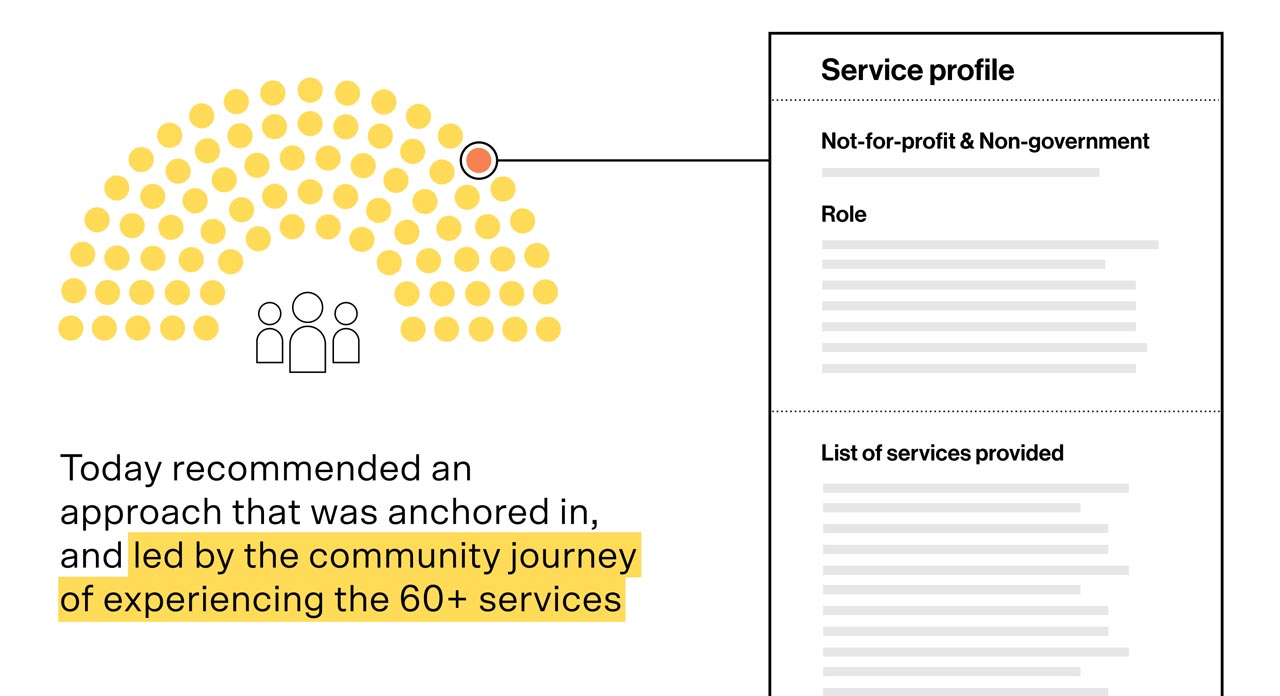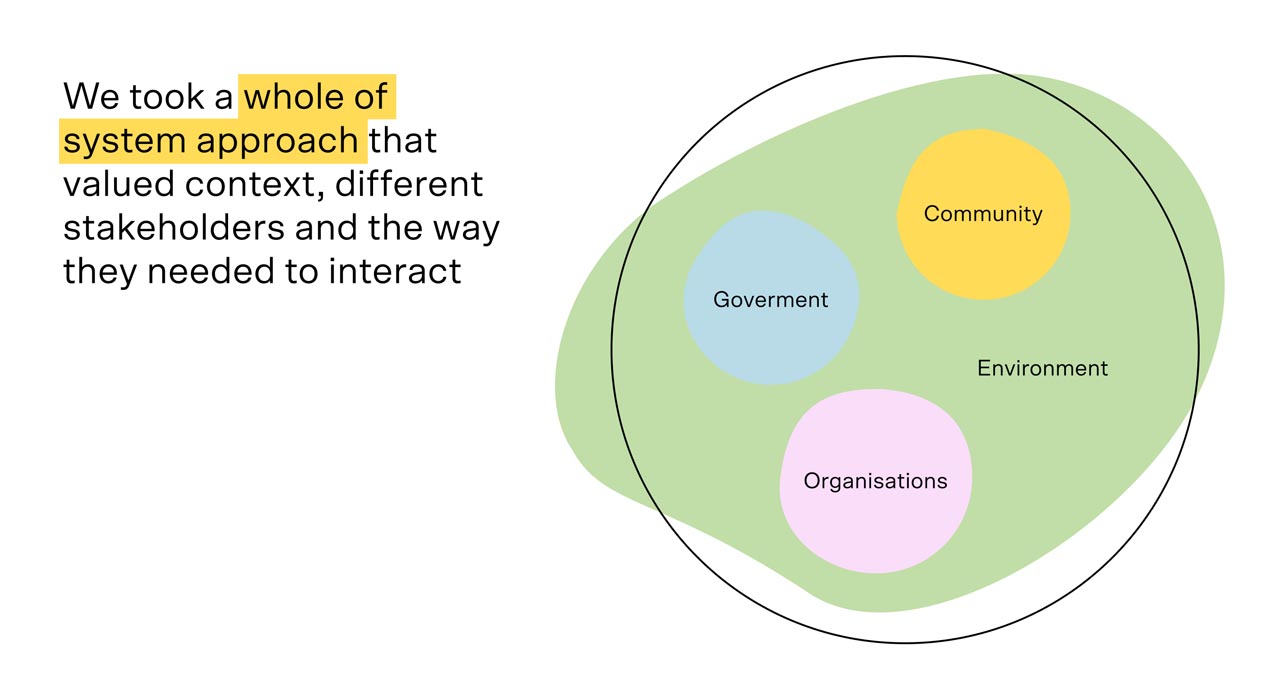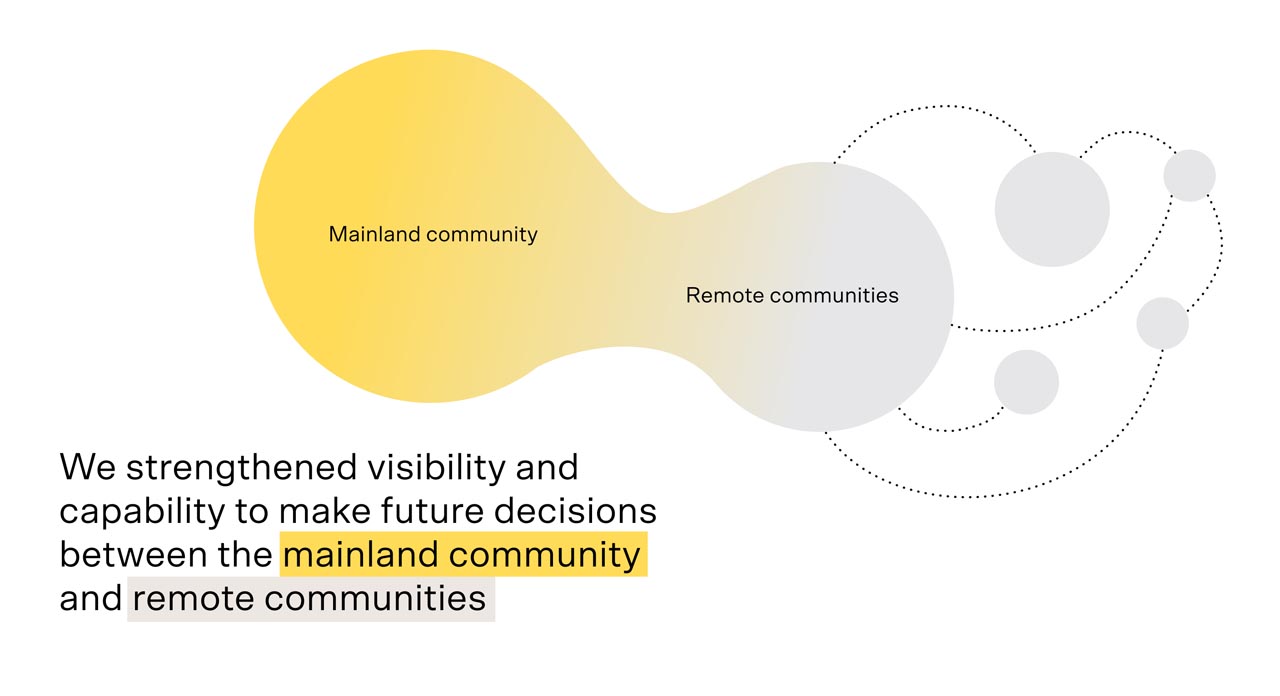Using a service design and ‘systems thinking’ approach, Today developed an outcome that supports the delivery of effective services—anchored in community needs and best practice, family-centred care.
With the community front-of-mind, we built a service model through participatory design that now enables more effective service implementation across providers that meets user needs, and can be delivered efficiently from far away.
A human-centred, whole system view means that policy and funding can more effectively meet the needs of children, young people and families. An evidence base is now in place that calls out coverage and gaps, with an indicator of urgency.

